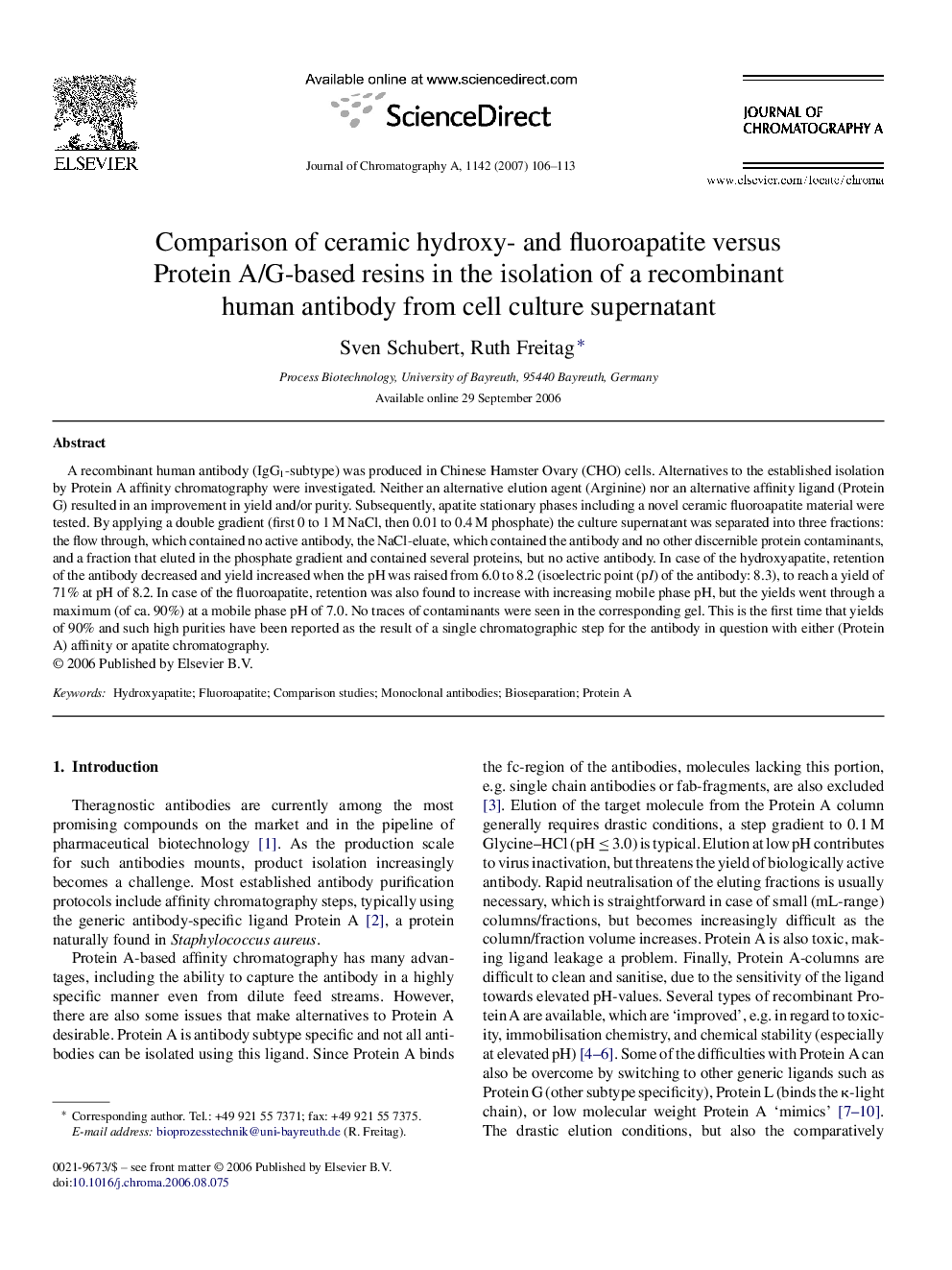| Article ID | Journal | Published Year | Pages | File Type |
|---|---|---|---|---|
| 1209276 | Journal of Chromatography A | 2007 | 8 Pages |
A recombinant human antibody (IgG1-subtype) was produced in Chinese Hamster Ovary (CHO) cells. Alternatives to the established isolation by Protein A affinity chromatography were investigated. Neither an alternative elution agent (Arginine) nor an alternative affinity ligand (Protein G) resulted in an improvement in yield and/or purity. Subsequently, apatite stationary phases including a novel ceramic fluoroapatite material were tested. By applying a double gradient (first 0 to 1 M NaCl, then 0.01 to 0.4 M phosphate) the culture supernatant was separated into three fractions: the flow through, which contained no active antibody, the NaCl-eluate, which contained the antibody and no other discernible protein contaminants, and a fraction that eluted in the phosphate gradient and contained several proteins, but no active antibody. In case of the hydroxyapatite, retention of the antibody decreased and yield increased when the pH was raised from 6.0 to 8.2 (isoelectric point (pI) of the antibody: 8.3), to reach a yield of 71% at pH of 8.2. In case of the fluoroapatite, retention was also found to increase with increasing mobile phase pH, but the yields went through a maximum (of ca. 90%) at a mobile phase pH of 7.0. No traces of contaminants were seen in the corresponding gel. This is the first time that yields of 90% and such high purities have been reported as the result of a single chromatographic step for the antibody in question with either (Protein A) affinity or apatite chromatography.
